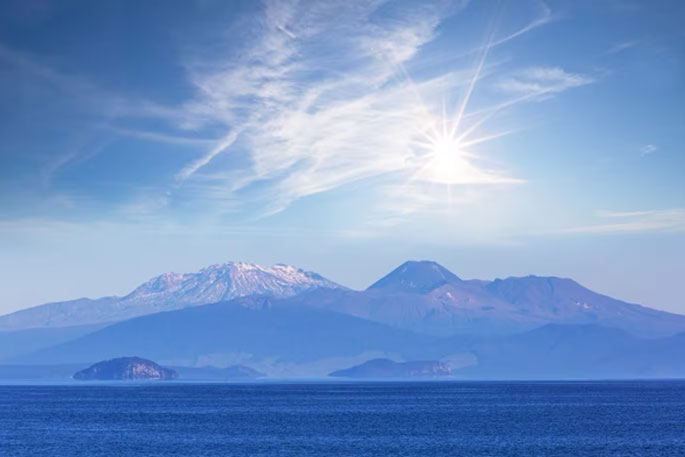Slightly elevated levels of the toxic heavy metal arsenic have been detected in treated water sourced from the Waikato River.
Science and environmental reporter Jamie Morton explains what it is, what happens next, and what it means for our drinking water.
What is arsenic?
It’s a naturally occurring chemical that generally comes in two forms.
We find inorganic arsenic in rocks and minerals – and hence in groundwater where drinking water supplies can be sourced from – while organic arsenic is found in fish and shellfish.
Inorganic arsenic is widespread in our environment, but concentrations of it can be higher near geothermal systems or gold deposits, industrial plants, or in places where it’s been used in the past as a pesticide, like sheep dips, orchards and vineyards.
Can it pose a health hazard?
Ingesting a large amount of arsenic within a few hours or days can cause poisoning – but cases of this are extremely rare.
We’re more likely to hear about it as a potential health hazard over the longer term, as it enters our bodies through water and food.
If we drink water with elevated levels of arsenic over long periods of time, it can increase our risk of various cancers, along with heart and skin problems.
“Arsenic is toxic at relatively low doses and therefore the amount that people receive needs to be kept to a practical minimum,” a Waikato Regional Council (WRC) spokesperson told the Herald, adding that it wasn’t practical to remove all arsenic from public drinking water.
What do we consider an elevated level?
Under our current drinking water standards, the “maximum acceptable value” (MAV) in drinking water is 0.01 milligrams per litre (mg/l).
According to a study by the United States National Academy of Sciences, constantly drinking water at that level corresponds to a one-in-1000 lifetime chance of developing cancer.
So, how much arsenic has just been detected in the Waikato River?
This week, two drinking water suppliers who treat water from the Waikato River reported recent sampling results just a nudge above that threshold.
Watercare, which serves Auckland supplies, reported a result of 0.011/mg/l, while Hamilton City Council recorded results of 0.0113mg/l and 0.0115mg/l.
Health authorities say people don’t need to be alarmed.
“Drinking water with slightly elevated levels for a short period of time is unlikely to impact people’s health,” said the National Public Health Service’s regional clinical director, Dr William Rainger.
Where has the arsenic come from?
The WRC told the Herald the results of further sampling were due soon, but it was possible council scientists wouldn’t be able to precisely pinpoint the source.
However, arsenic has long been found in the Waikato River: much of it stemming from geothermal sources.
In the case of Lake Taupō, arsenic levels at its exit point already sit right on the drinking water standard.
Meanwhile, upper areas of the Waikato River around Wairakei and Ohaaki receive some arsenic discharged from geothermal power companies.
Another potential source could be accumulated arsenic in sediments within the hydro lakes along the Waikato River.
Massey University environmental chemist Dr Nick Kim said these types of fluctuations have been observed for a long time.
“There’s no danger of it becoming acutely toxic: it’s to do with these long-term averages, not spikes.”
What can you do if you want no arsenic in your water?
Arsenic can’t be boiled out of water - it actually increases concentrations.
Rainger says levels are low enough that removal at home isn’t needed.
But if you’re drawing water from your own bores, it’s a good idea to install treatment filters and get them tested to ensure arsenic levels are within safe limits.
Sampling typically costs less than $100.
Jamie Morton is a specialist in science and environmental reporting. He joined the Herald in 2011 and writes about everything from conservation and climate change to natural hazards and new technology.



0 comments
Leave a Comment
You must be logged in to make a comment.